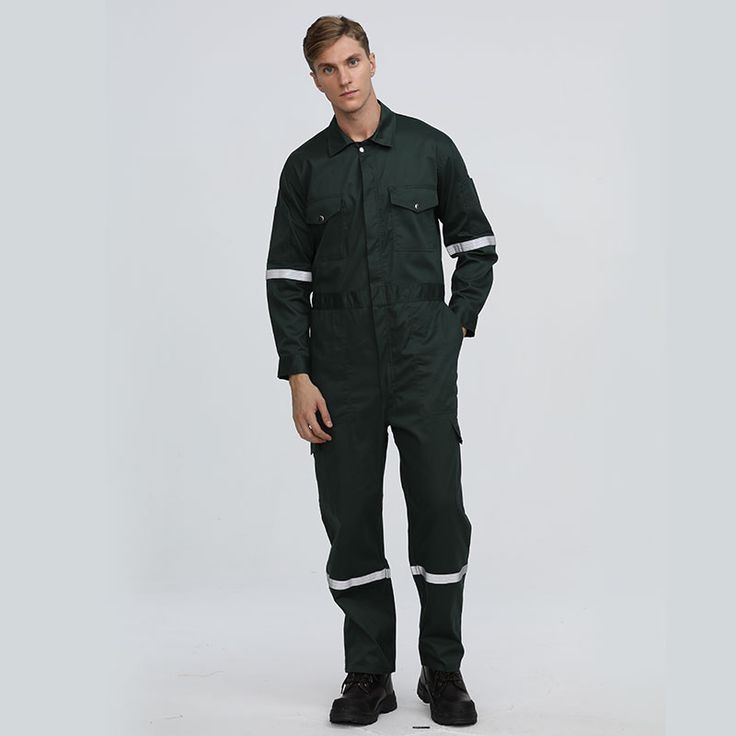
Anti-Static Workwear: Essential for Specific Saudi Industries
In the world of modern industries, anti-static workwear serves as the first line of defense against electrical hazards in sensitive work environments. In Saudi Arabia, where petrochemical, electronics, and pharmaceutical industries flourish, this specialized clothing becomes an indispensable necessity for ensuring worker safety and protecting sensitive equipment.
Understanding Static Electricity and Its Industrial Hazards
Static electricity is the accumulation of electrical charges on material surfaces due to friction or separation. In industrial environments, these charges can lead to:
- Explosions and Fires: In the presence of flammable materials
- Electronic Equipment Damage: Especially sensitive integrated circuits
- Worker Electric Shocks: Affecting their safety and productivity
- Product Contamination: In precision industries like pharmaceuticals and electronics
Saudi Industries Requiring Anti-Static Workwear
Petrochemical Industry
Saudi Arabia is one of the world's largest petrochemical producers, with giant companies like SABIC and Aramco. In these environments, where flammable gases and liquids are present, anti-static workwear becomes absolutely essential to prevent explosions and fires.
Electronics and Technology Industry
With the growth of the technology sector in the Kingdom under Vision 2030, protecting sensitive electronic components from static discharge becomes increasingly important. Factories producing computers, smartphones, and medical equipment require static-free environments.
Pharmaceutical Industries
In pharmaceutical manufacturing, where cleanliness and precision are paramount, anti-static workwear helps prevent product contamination and ensures the quality of manufactured medicines.
International Safety Standards
Anti-static workwear complies with strict standards:
- IEC 61340-5-1: International standard for electronic device protection
- EN 1149: European standard for protective clothing
- NFPA 77: National Fire Protection Association standards
- ANSI/ESD S20.20: Static electricity control program standard
Characteristics of Anti-Static Workwear
Conductive Fibers
These garments contain conductive fibers such as carbon or stainless steel, which are woven into the fabric in a regular pattern to provide a safe path for discharging electrical charges to ground.
Controlled Surface Resistance
These fabrics feature specific surface resistance ranging from 10^5 to 10^11 ohms, ensuring charges discharge quickly enough to prevent accumulation without becoming dangerously conductive.
Practical Applications in the Saudi Environment
Adaptation to Hot Climate
Anti-static workwear has been specifically developed to adapt to the Kingdom's hot climate, with advanced cooling technologies and fabrics that allow good ventilation without compromising anti-static properties.
Integration with Other Safety Equipment
These garments are designed to work in harmony with other safety equipment such as anti-static shoes and specialized gloves, providing comprehensive worker protection.
Maintenance and Care
To maintain the effectiveness of anti-static workwear, specific maintenance guidelines must be followed:
- Specialized Washing: Using special detergents that don't affect conductive fibers
- Regular Testing: Testing surface resistance regularly
- Proper Storage: In a dry and clean environment
- Scheduled Replacement: According to a specific schedule or when properties deteriorate
Investment in Safety and Productivity
Although anti-static workwear may be more expensive than regular clothing, investing in it yields significant returns through:
- Reducing accident and explosion risks
- Protecting sensitive equipment from damage
- Improving product quality
- Compliance with international and local standards
- Enhancing worker confidence and productivity
Future of Anti-Static Workwear
With continuous technological development, we see new innovations in this field including:
- Smart Fabrics: That automatically adapt to humidity and temperature levels
- Integrated Monitoring Systems: For real-time protection effectiveness monitoring
- Nanomaterials: To improve performance and reduce weight
- Comfortable Designs: That combine protection with maximum comfort
Conclusion
Anti-static workwear is a vital investment in worker safety and asset protection in specialized Saudi industries. With the continued growth of industrial and technological sectors in the Kingdom, the importance of this specialized clothing increases as an integral part of comprehensive safety strategy.
Investing in high-quality anti-static workwear is not just compliance with safety standards, but an investment in a safer and more productive future for Saudi industries, contributing to achieving the Kingdom's Vision 2030 goals for economic diversification and technological development.
About the Author
Engineer Ahmed Al-Salem, expert in industrial safety and specialized workwear, with over 15 years of experience in petrochemical and electronics industries in Saudi Arabia.